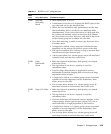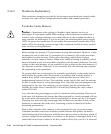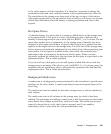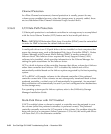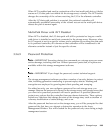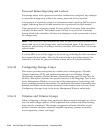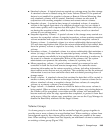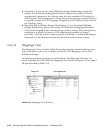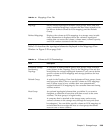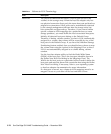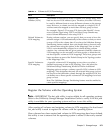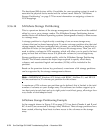
Chapter 3 Storage Arrays 3-65
■ Standard volume - A logical structure created on a storage array for data storage.
A standard volume is created using the Create Volume Wizard. If the premium
feature is not enabled for snapshot volumes or Remote Volume Mirroring, then
only standard volumes will be created. Standard volumes are also used in
conjunction with creating snapshot volumes and remote mirror volumes.
■ Snapshot volume - A point-in-time image of a standard volume. A snapshot
volume is the logical equivalent of a complete physical copy, but you create it
much more quickly and it requires less disk space. The volume from which you
are basing the snapshot volume, called the base volume, must be a standard
volume in your storage array.
■ Snapshot repository volume - A special volume in the storage array created as a
resource for a snapshot volume. A snapshot repository volume contains snapshot
volume metadata and copy-on-write data for a particular snapshot volume.o
Primary volume - A standard volume in a mirror relationship that accepts host
I/O and stores application data. When the mirror relationship is first created, data
from the primary volume is copied in its entirety to the associated secondary
volume.
■ Secondary volume - A standard volume in a mirror relationship that maintains a
mirror (or copy) of the data from its associated primary volume. The secondary
volume remains unavailable to host applications while mirroring is underway. In
the event of a disaster or catastrophic failure of the primary site, the system
administrator can promote the secondary volume to a primary role.
■ Mirror repository volume - A special volume created as a resource for each
controller in both the local and remote storage array. The controller stores
mirroring information on the mirror repository volume, including information
about remote writes that are not yet complete. The controller can use the mirrored
information to recover from controller resets and accidental powering-down of
storage arrays.
■ Source volume - A standard volume that contains the data that will be copied to
another volume, which is known as the target volume. A source volume can be
either a standard volume, a snapshot volume, the base volume of a snapshot
volume, or a primary volume of a mirrored pair.
■ Target volume - A standard volume to which the data on the source volume is
being copied. When a volume is selected as a target volume, any existing data on
the volume will be completely overwritten and the volume will automatically
become read-only after the copy operation has completed, to protect it from host
write access. After the volume copy completes, you can use the Copy Manager to
disable the Read-Only attribute for the target volume.
Volume Groups
A volume group is a set of drives that the controller logically groups together to
provide one or more volumes to an application host. When creating a volume from
unconfigured capacity, the volume group and the volume are created at the same
time. When creating a volume from free capacity, an additional volume is created on
an existing volume group (Figure 3-28).





